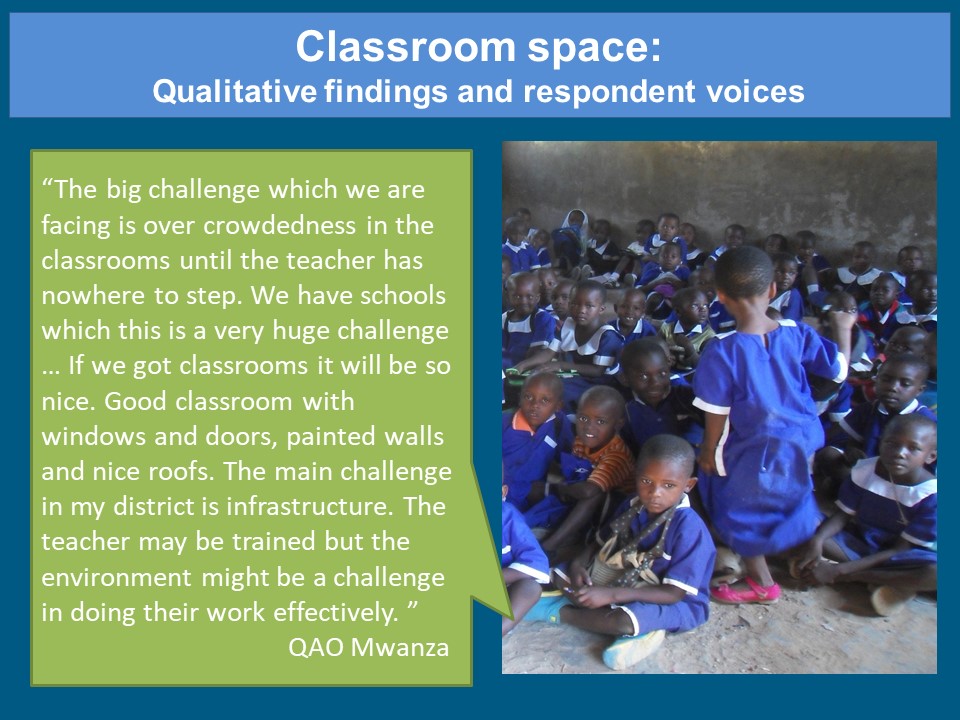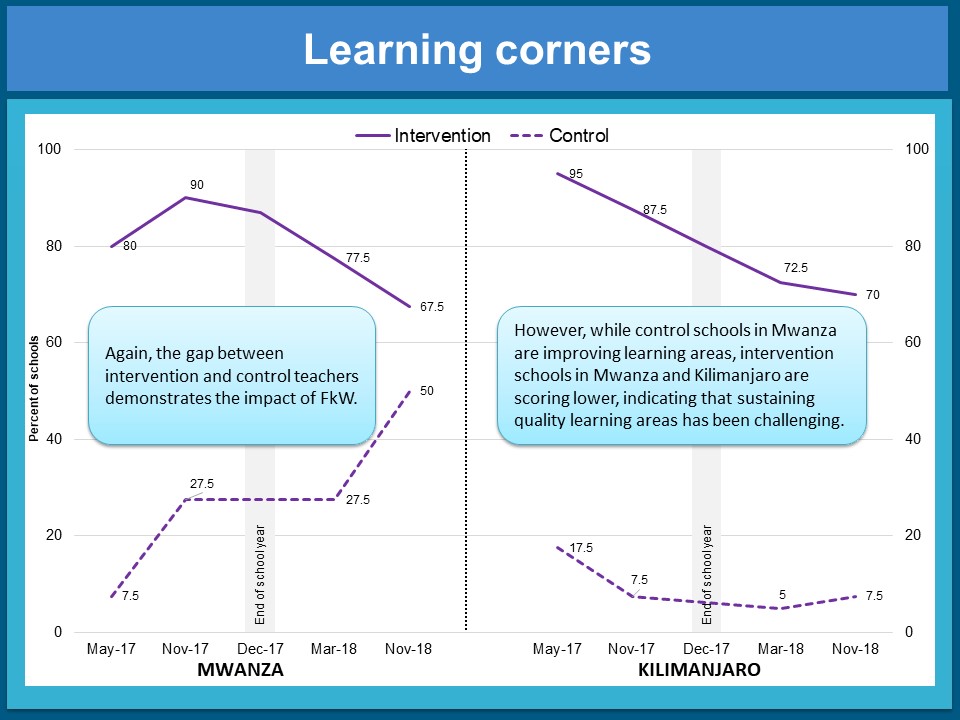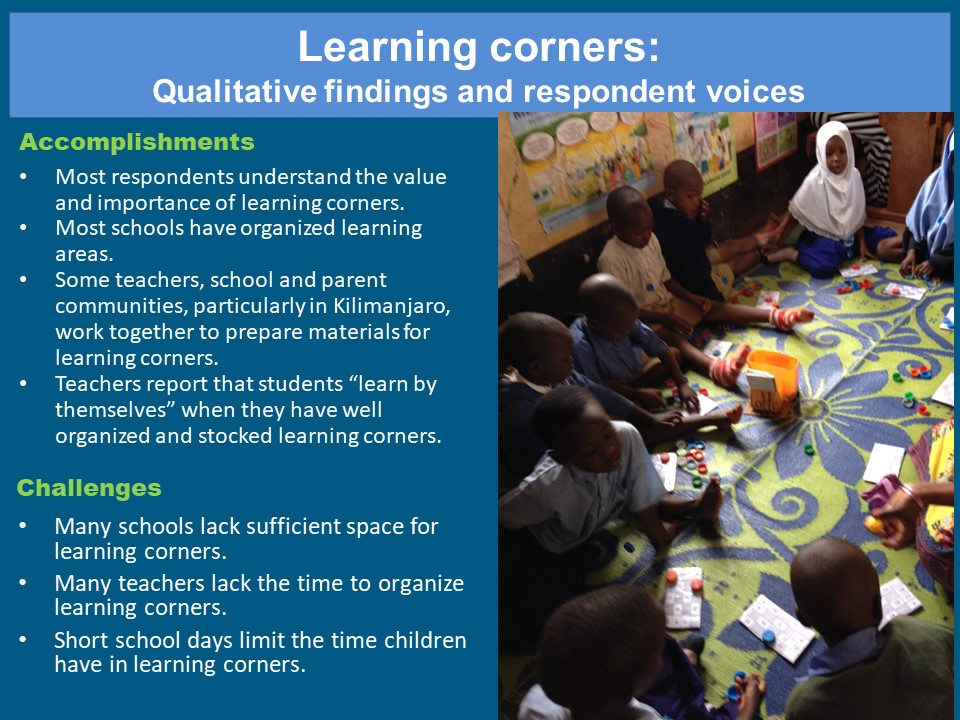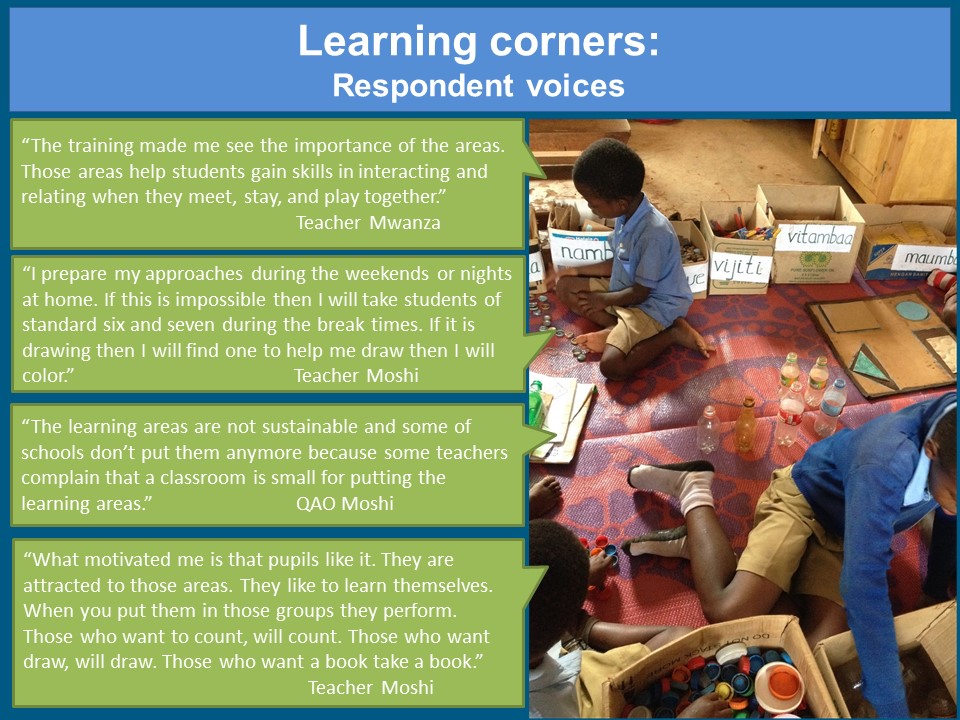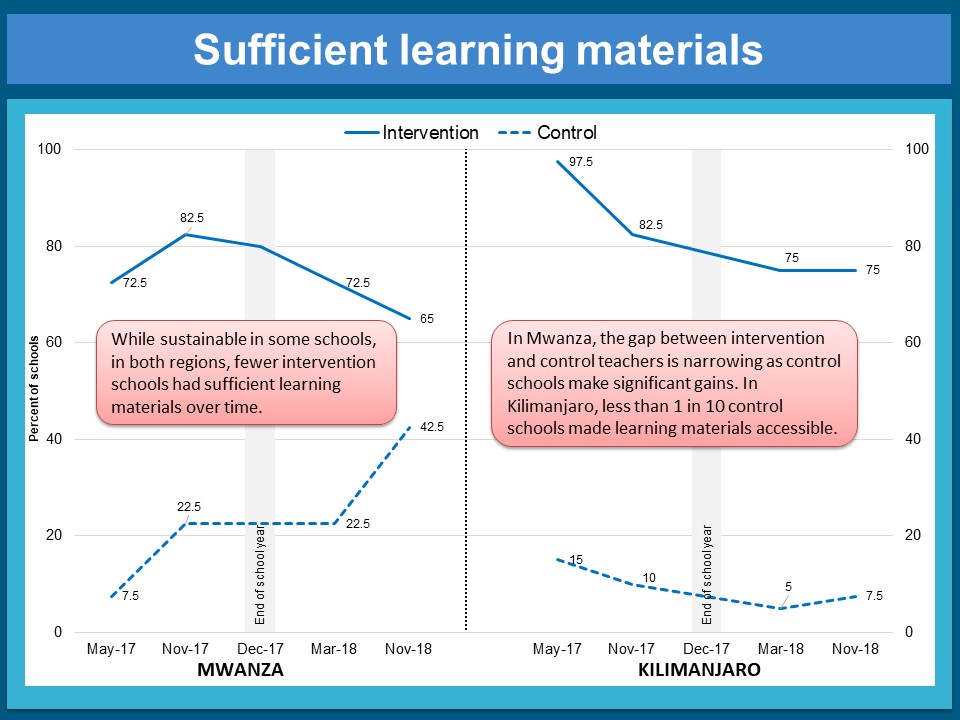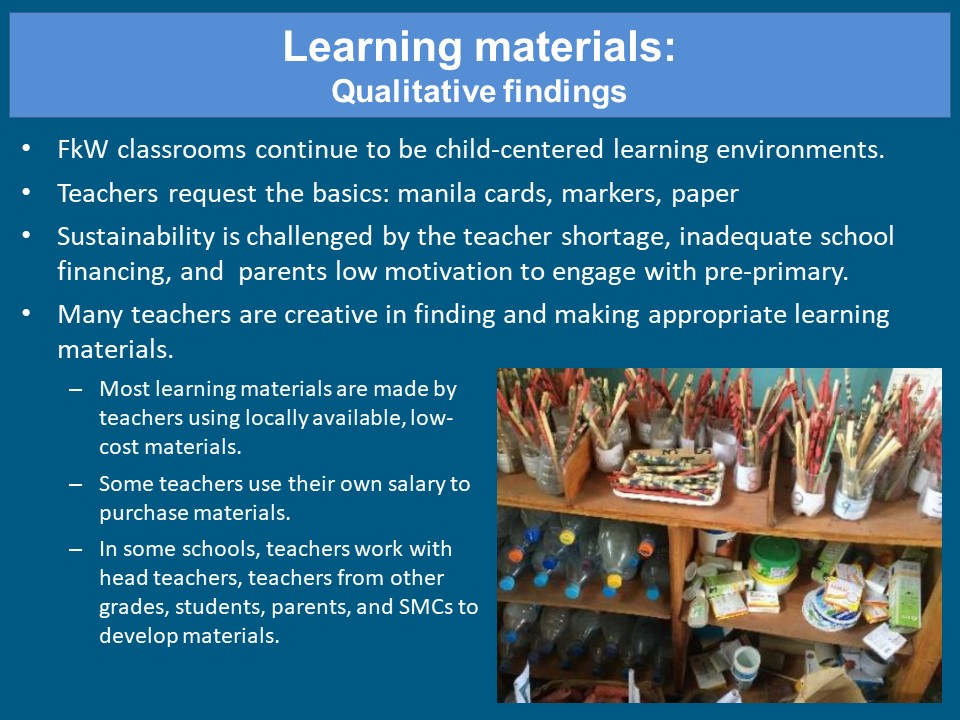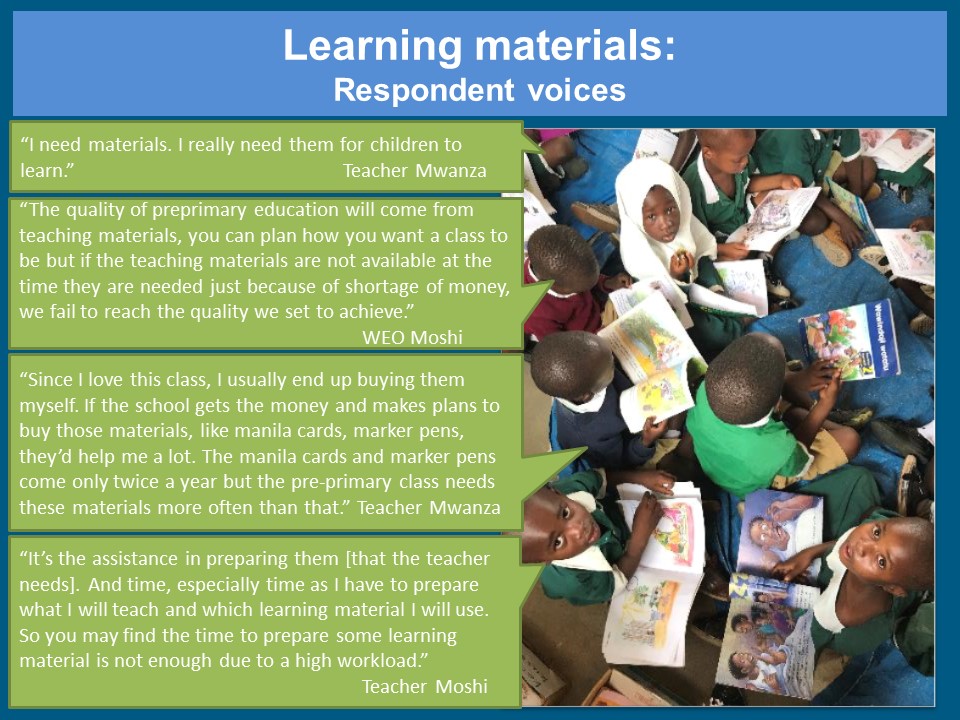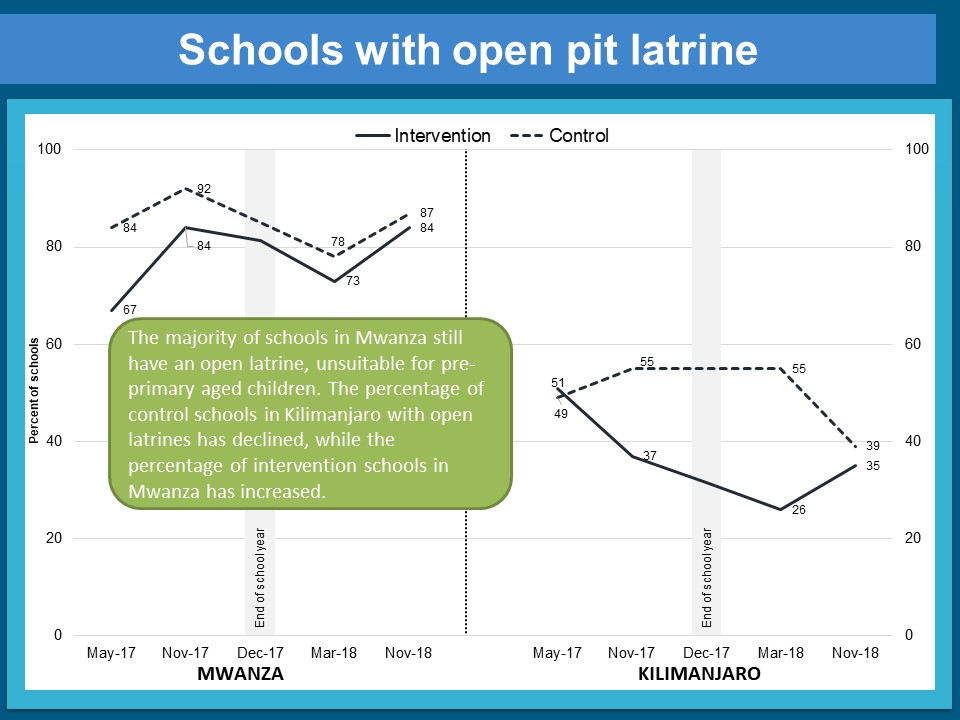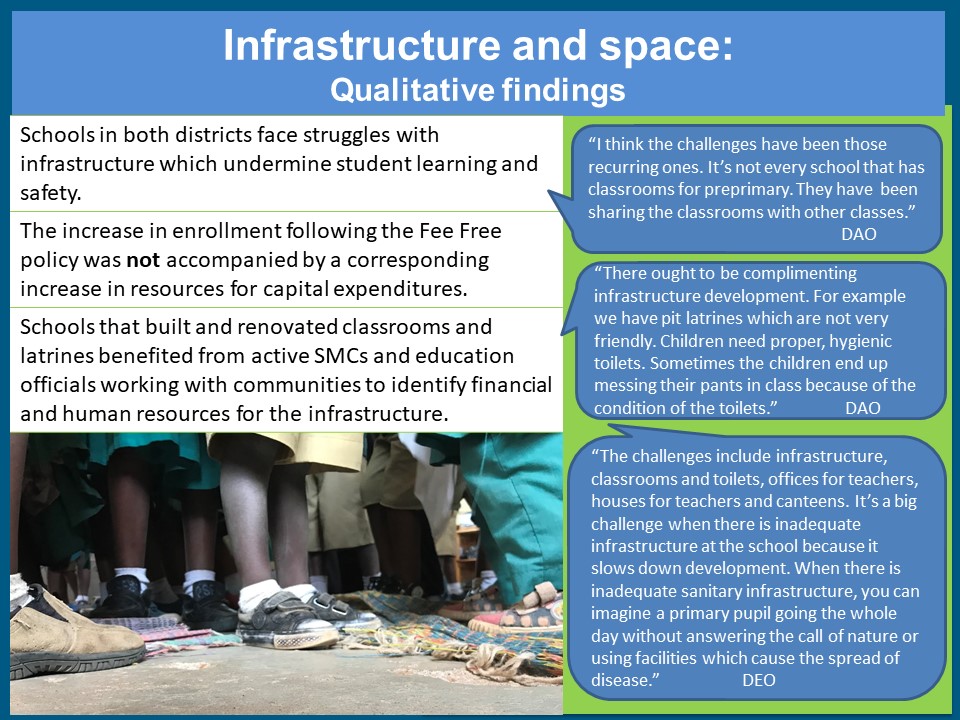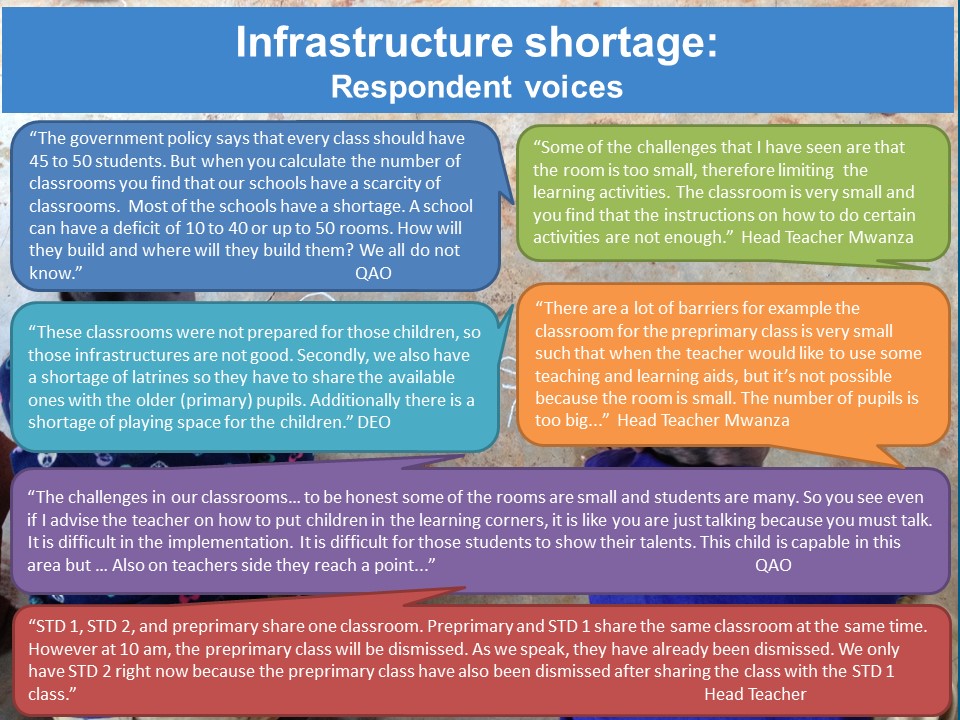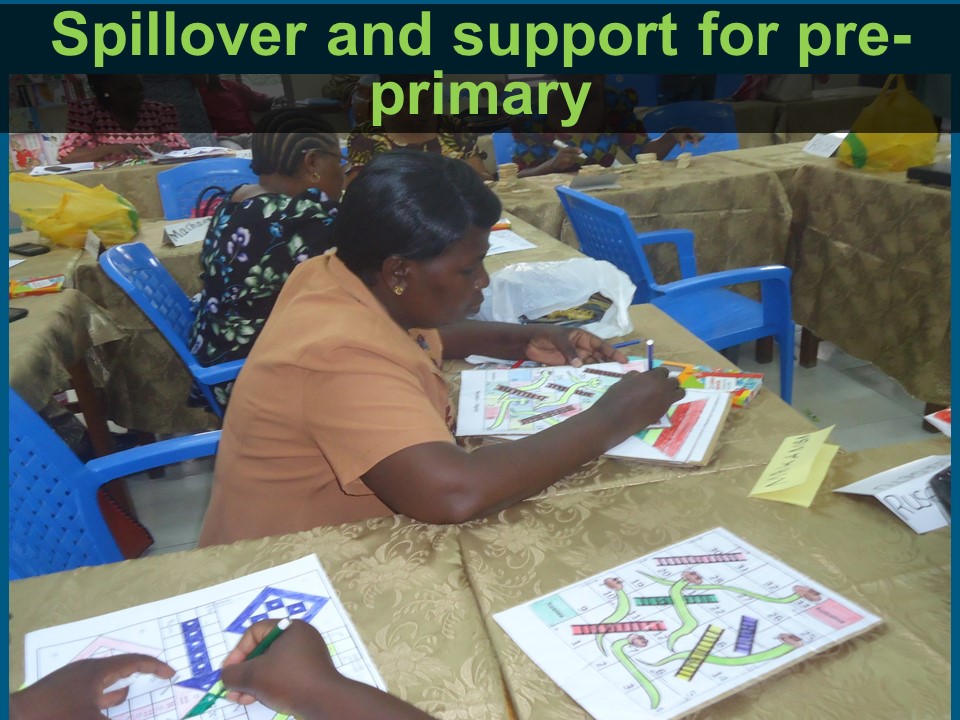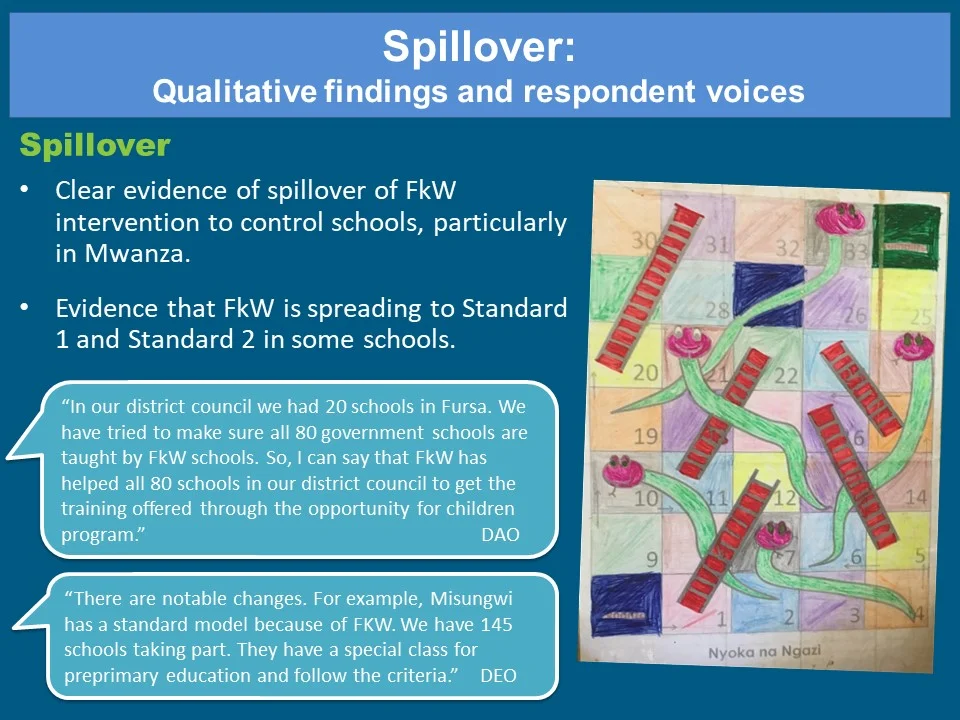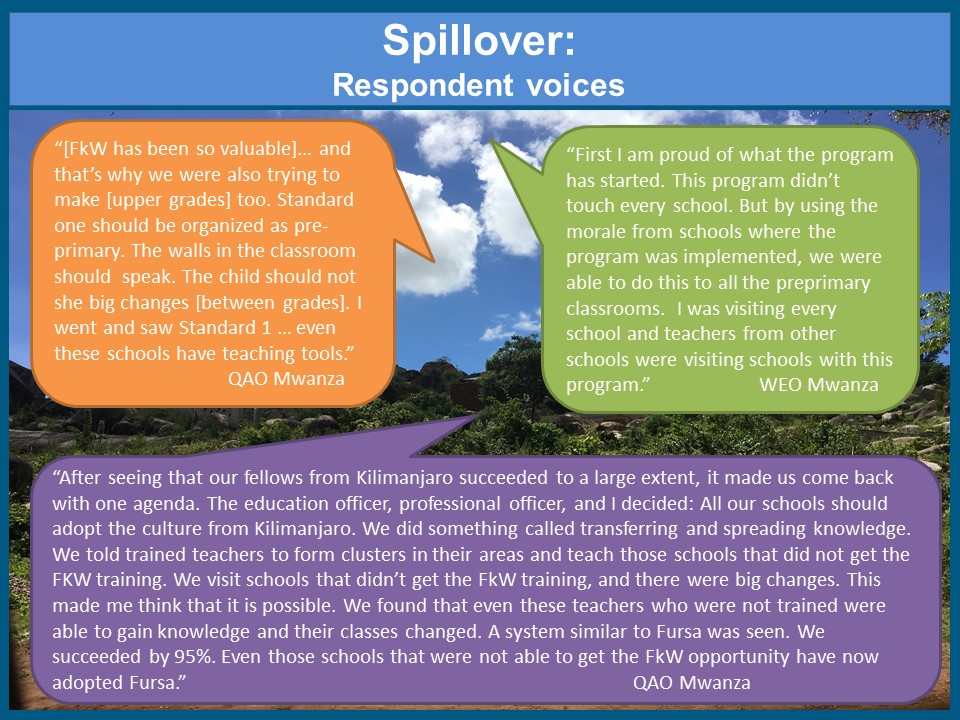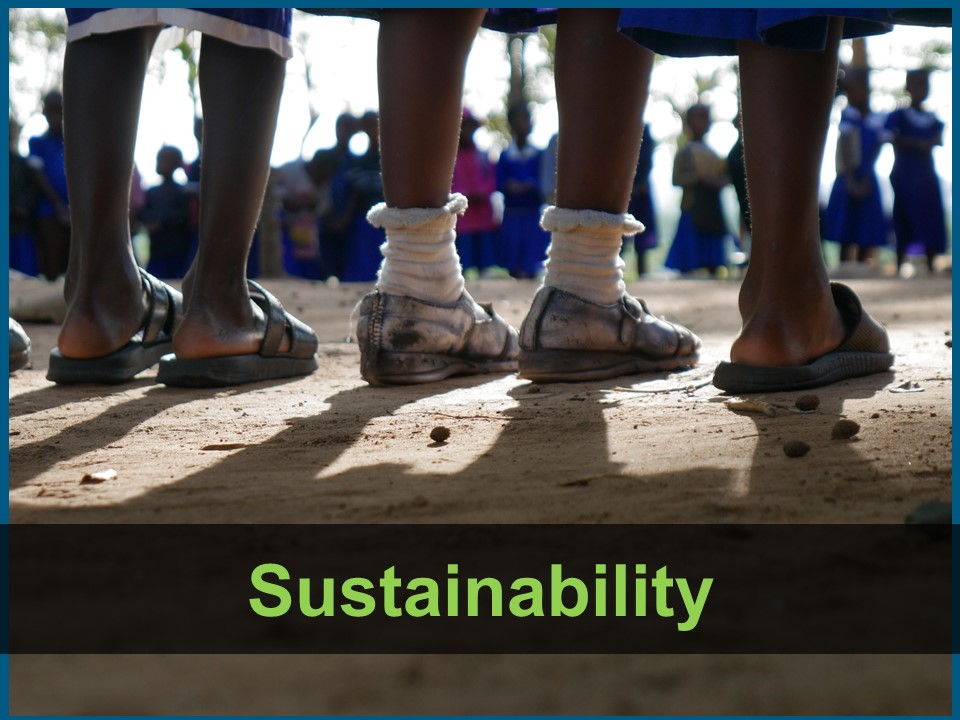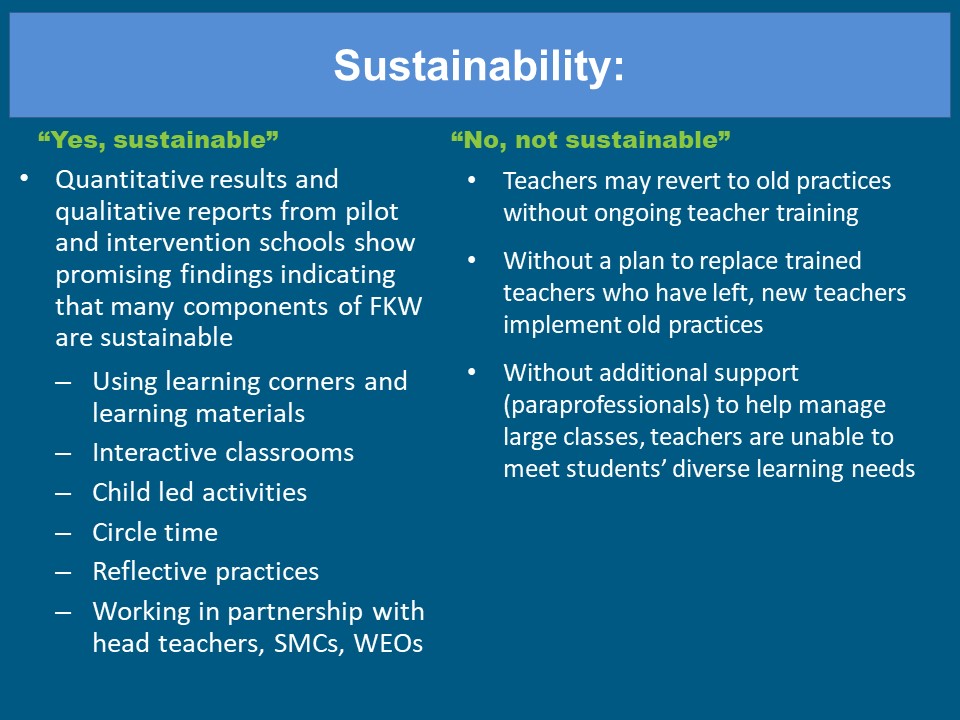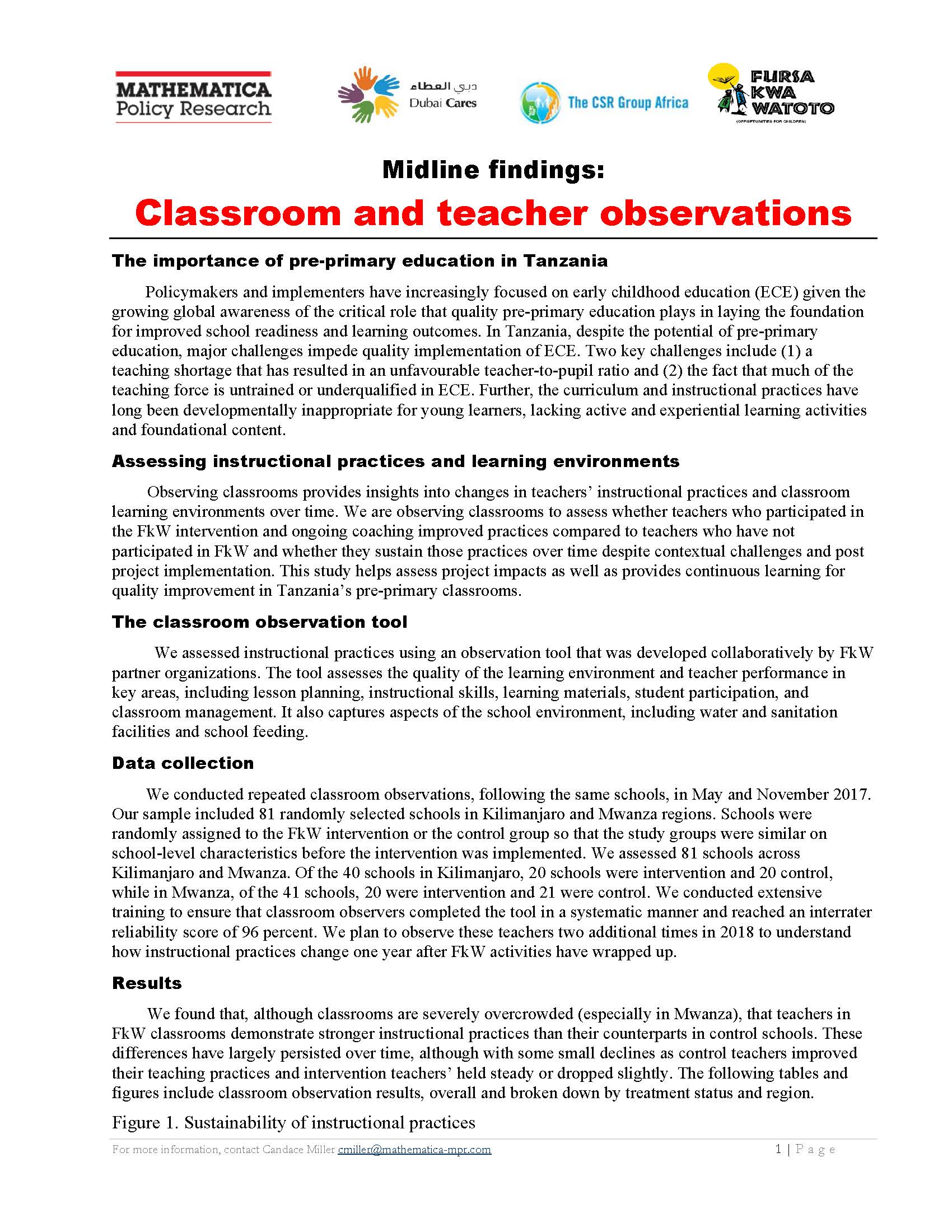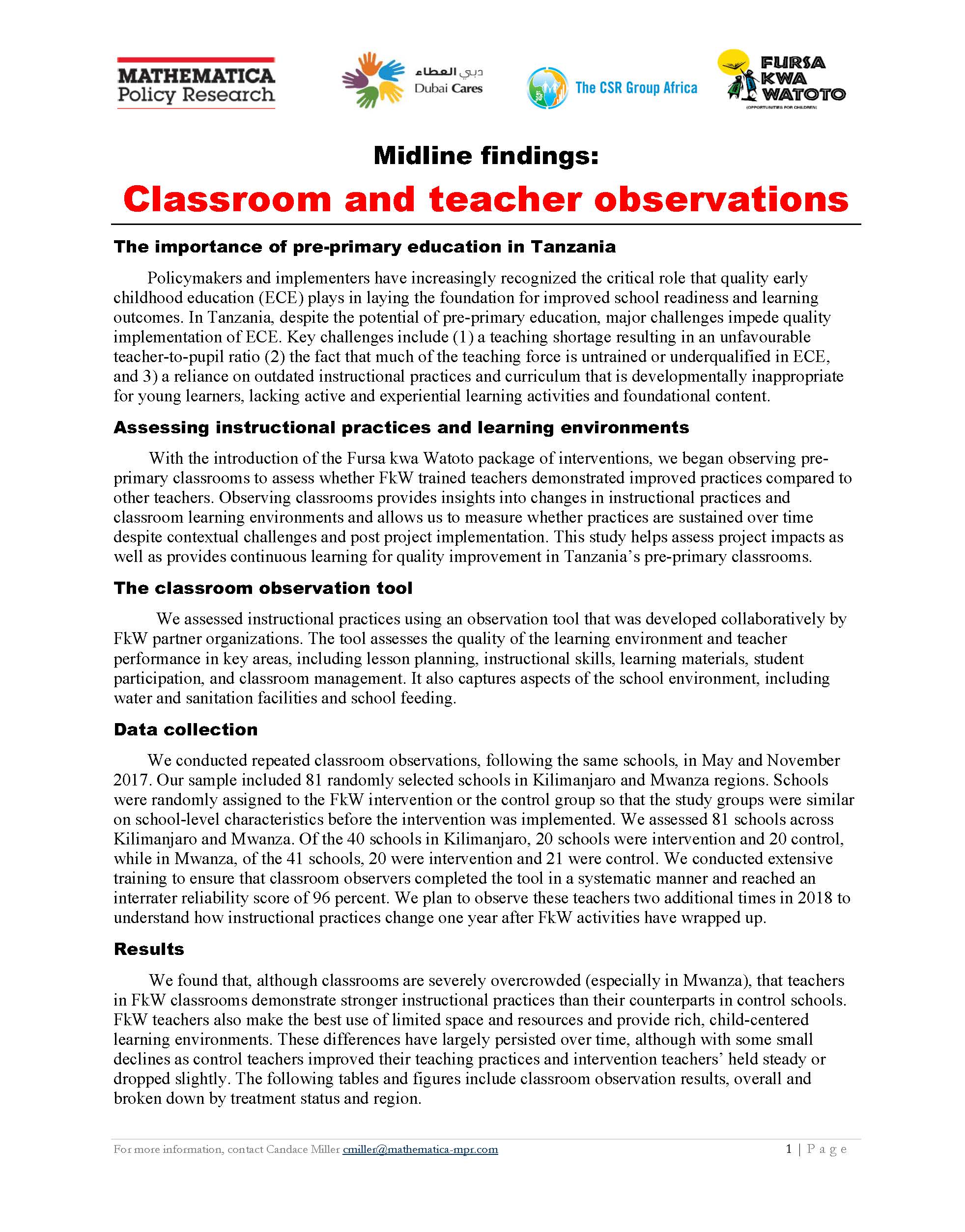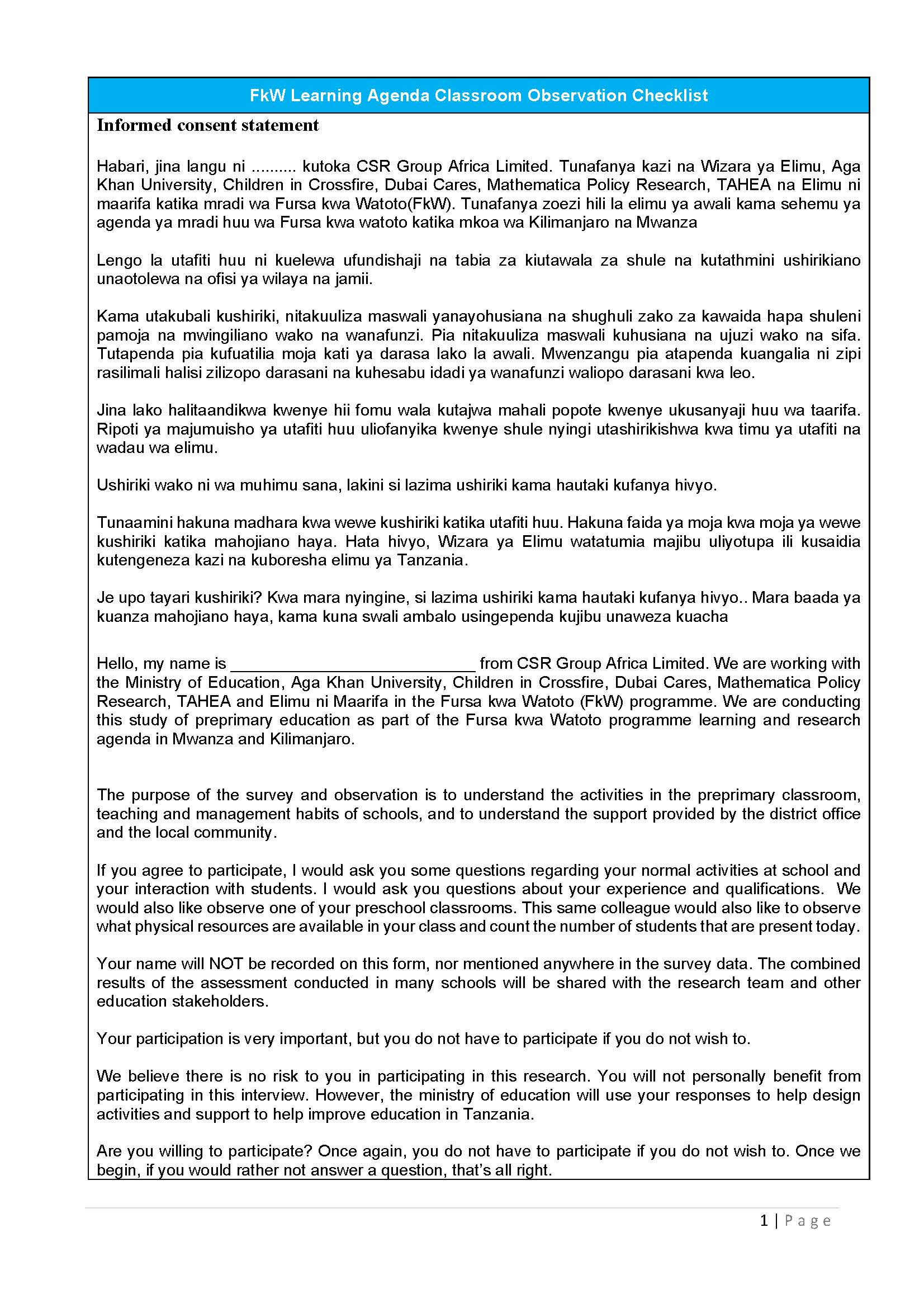Learning Environments and Materials
Final Results
Rationale for FkW
A key tenet in the FkW approach is that children need safe, clean, stimulating, and age appropriate learning environments and materials to maximize learning. Typically pre-primary classrooms in Tanzania have been the lowest quality rooms in the school. They are often small, dark, overcrowded, and often lack materials.
To remedy this situation, FkW aimed to help schools redesign their approach to pre-primary classrooms in a cost effective and sustainable manner. The initiative identified low cost ways to improve classroom environments and learning materials so they support learning and be suited to the developmental stage of 5-6 year old children. Learning materials should improve student readiness for entering Standard I in Primary School. Schools received kits including the following materials:
Stationery and teaching resources to make materials, such as markers, colored and lead pencils, glue, paper and cardboard, teacher’s guides and pictorial wall charts, scissors, and tape
Furniture, such as a lockable cupboard and shelves, for safe storage of materials and floor mats
Age-appropriate storybooks in Kiswahili and English
Manipulatives, such as collections of metallic and plastic lids, corncobs, and bottle tops (for counting and sorting)
Writing materials such as chalk, slates, and paper
Board games and game pieces, such as wooden dice, dominoes, and puzzles, and photocopied templates for games such as Snakes/Chutes and Ladders, Lotto, Memory, and Ludo
The materials from the learning kits were used to set up the four learning areas:
Classroom learning materials, including bookshelves, mats, collections of local materials, board games, and story books
The reading area enables students to practice literacy skills, including print recognition and decoding, sequencing, prediction, how text and illustrations work together to tell a story, and literacy for enjoyment.
The manipulation area helps students learn pre-mathematics and numbers, including counting and sequencing; identifying patterns, similarities and differences, 2-D and 3-D shape symmetry, lines, space, position, direction; and learning measurement and the concepts of size, height, mass, length, capacity, volume, time, and distance.
The writing area is a place for students to practice writing and drawing; to experiment with tools that enhance fine motor development, such as pencils, scissors, and glue; and to learn techniques such as cutting, tearing, folding, and coloring.
The board games area is for students to practice social skills, such as following rules, taking turns, cooperation, winning and losing graciously, strategic thinking, and problem solving. It also is a place to practice literacy and numeracy depending upon the game.
In addition to promoting creativity, imagination and self-directed learning, teachers were also encouraged to use the learning areas to help children develop respect for materials and routines to care for materials.
Classroom Observations in the Learning Agenda
In the Learning Agenda, we are observing classrooms over time to gain detailed insights into instructional practices and learning environments across a range of dimensions over time, based on schools and teachers participating in FkW. The observations will enable us to better understand teachers’ instructional practices, behaviors, and methods that are along the causal pathway between FkW training and student learning. The longitudinal approach enables an assessment of whether teachers who participate in FkW, both certified teachers and paraprofessionals, are in fact taking up the intervention as described in the theory of change—compared to teachers who have not participated in FkW—and whether they continue to implement the practices as they receive ongoing coaching. Although the links between training, instructional practices, and student learning are critical underpinnings to the theory of change for most in-service training and professional development programs, a literature review revealed relatively few rigorous evaluations that test these links or that test this overarching theory of change, especially in developing countries and among pre-primary teachers. We believe that teacher observations through FkW can help begin to fill an important gap in this literature.
We are using the Classroom Observation tool to assess the school and classroom environment and learning materials. The tool assesses the quality of the learning environment and teacher performance in the following areas:
Organization of the school day
Lesson plan development and use
Instructional strategies and skills
Use of learning materials and classroom resources
Appropriateness, quality, and quantity of learning materials
Children’s participation in learning
Teacher interaction during play sessions
Classroom management
We also added items on the school environment, such as physical space—both indoors and outdoors—water source, hand-washing and toilet facilities, and feeding programs. To learn more about the Classroom Observation study, see the Learning Agenda Design Report and findings from the 2017 classroom observation study.
Links to policy briefs and presentations
As we complete analyses, we will share data, key lessons, and recommendations inform teachers, schools, policymakers, and other stakeholders.

























